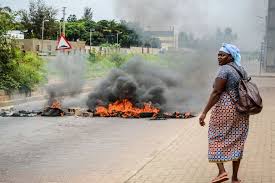Political and Economic environment to 2015
The underlying structural causes of state weakness in sub-Saharan Africa – relatively low population densities, problematic population distribution and poor infrastructure will remain ubiquitous through 2015 and beyond, impeding the prospects of significant gains in broad based institution building and development. Much will depend upon two external drivers of development and growth – foreign direct investment (FDI) and aid flows – whose distribution across the continent will continue to be uneven, maintaining a situation in which nodes of promise sit side by side with zones of weak governance and in which some other countries stubbornly refuse to respond to external efforts to stimulate growth and development.
While it is relatively easy to forecast which countries will fall into these different areas, Africa’s experience over the past decade underlines the extent to which there is no room for complacency. Likewise many of the new generation of African leaders hailed in the mid1990s – those from Ruanda, Uganda and Ethiopia, in particular – have since become a source for disappointment, instinctively reverting to methods of authoritarian political and economic control provoked by weak institutions . Others such as Mozambique and Liberia have exceeded expectations and others such as Botswana, Ghana and Tanzania have quietly got on with the business of reforms.
The failures are most likely to include those countries in historically-rooted zones of weak governance such as the Central African Republic (CAR) or the Congo (DRC). Improved mechanisms for managing intra-state conflict should prevent the re-emergence of top-down conflict. However, social transformations connected to globalization and local demographic pressures will continue to favor violence as the principle means for resolving disputes at a local level. This will be most felt in the Sahelian region, reaching from the Sudanese province of Darfur in the east, across the CAR, southern Chad, northern Cameroon, Mali and Niger. The tri-border area between Sudan, Uganda and Kenya is also at risk of developing into a zone of entrenched social conflict.
While certain continental trends, such as rapid urbanization and the deepening of the HIV/AIDS crisis seem to imply a homogenization of the African continent south of the Sahara, the assessment is that Africa will in fact become less homogenous in the medium term. The differences between countries will become more entrenched, despite enduring risks of cross border destabilization. The economic and political pre-eminence of Nigeria and South Africa will persist, though both seem set to undergo significant change. Nigeria will seek to strengthen institutions and mediate secessionist tendencies and South Africa will seek to moderate accusations of regional domination. Encouraged by this it is to be expected that the international community will seek to empower the AU as a peacekeeping force and diplomatic broker, however political divisions between African nations will prevent the AU from developing into a truly effective force.
Failed and Fragile States in Africa
According to the British government’s Department for International Development, failed and fragile states are today home to more than 900m people, half of whom live in severe poverty. This poses a significant threat to international security as such states offer a safe haven for illicit trade, drugs-production and weapons-smuggling. Corruption presents an endemic problem and the global result is likely to be regional spillover of the effects of conflict, terrorism and a failure to manage epidemic diseases.
A high proportion of such countries are to be found in Africa. Highly fragile African States are the following:
• Central African Republic
• Chad
• Congo (DRC)
• Somalia
• Sudan
Those displaying signs of fragility are:
• Burundi
• Congo
• Eritrea
• Ethiopia
• Guinea-Bissau
• Liberia
• Nigeria
• Sao Thome and Principe
• Sierra Leone
• Yemen
• Zimbabwe
The problem of weak and failing states is significantly more dangerous than is generally understood as these unstable regions are a breeding ground for organized crime and terrorism. A case study is that of the greater Horn of Africa which includes Sudan, Ethiopia, Djibouti, Somalia, Kenya and Uganda. Two clusters of conflict emanating from specific states continue to destabilize the region. The first centers on interlocking rebellions in Sudan and affects northern Uganda, eastern Chad and north-eastern Central African Republic. The main culprits are the Sudanese government, which is supporting rebels in these three neighboring countries; and those states which are supporting Sudanese groups opposing Khartoum. This conflict is driven by the Sudanese wish to prevent a fragmentation of the country. The second cluster links the dispute between Ethiopia and Eritrea with the power struggle in Somalia, which involves the secular government, anti-government clan militias and anti-Islamic warlords. Ethiopia’s intervention in Somalia in December 2006 temporarily secured the transitional governments position, but this appears to have sown the seed for a future Islamic and clan-based insurgency, with regional implications.
Such states offer terrorists space to train and recruit dissatisfied followers. Given that such countries are “no-go areas” for government troops, they are also a safe haven to retreat to between operations, much as northern Pakistan is today for the Taliban operating in Afghanistan. Furthermore, such states also offer the possibility of financing terrorism through the exploitation of natural wealth.


